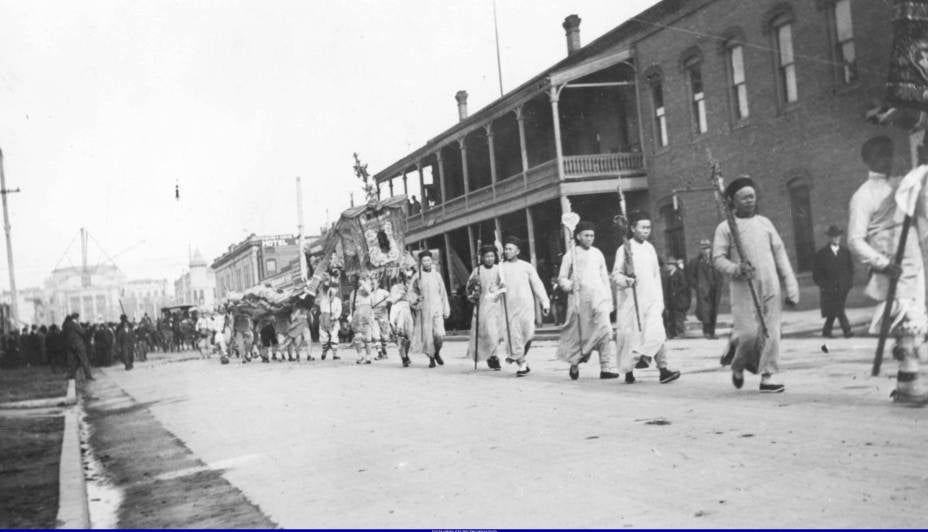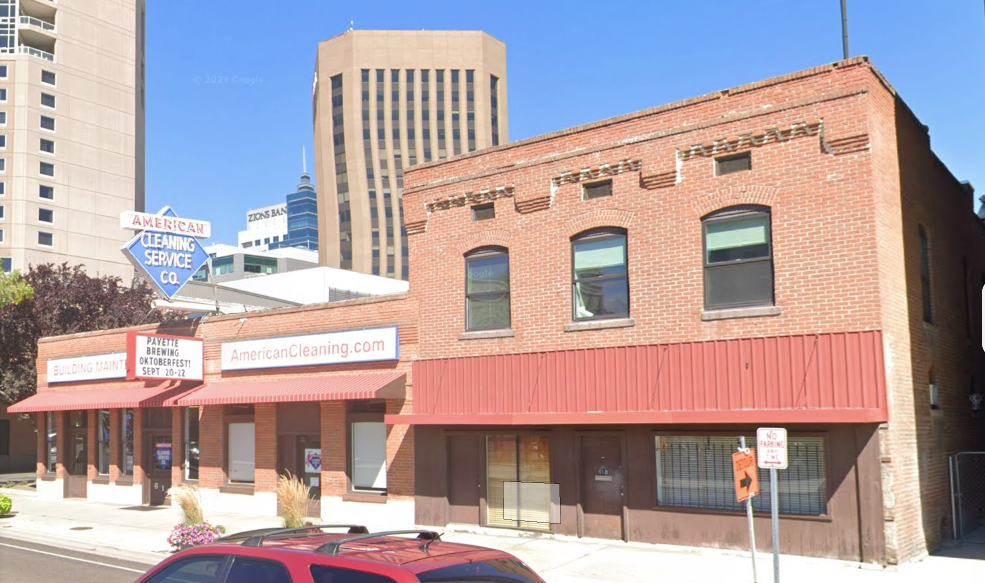Learning is all about asking questions, and no one asks questions better than children. Boise State is home to more than 1,400 faculty members and researchers who are eager to answer these amazing questions.
Today, Emily Fritchman, a lecturer in the history department, is answering a child’s question: “Are there secret tunnels under Boise?”
Fritchman is a fifth-generation Idahoan who loves and researches Idaho history and architecture. In her classes at Boise State, she shares this passion and the intrigues of the state’s history through courses such as “Idaho Myths and Legends” and her University Foundations 200 course, where students select, research and present a history of one unique, historic site in Idaho.
Are there secret tunnels under Boise?

Chinese New Year’s Day parade headed south on 7th St. The State Capitol is under construction in the back ground. A crowd of citizens watches the procession from the street curb. Photo taken 1905. Copyright Idaho State Historical Society 2012.
“There was a myth that came around as early as the 1940s that the city of Boise had a network of underground Chinese tunnels,” Fritchman said.
“In the mid-1800s, Idaho’s population was a quarter Chinese. You can still see that history reflected in different parts of Boise, and especially Garden City. For example, Garden City once was home to flourishing crops grown by Chinese farmers, resulting in the name of Chinden Boulevard, a street whose name is a combination of the words ‘Chinese’ and ‘garden.’ The population was so large because Chinese people built railroads, worked in mines, developed farmland and participated in many other industries across Idaho.
“However, the Chinese Exclusion Act of 1882 reflected Americans’ changing feelings about Chinese immigrants. The act restricted the arrival of new workers and prevented Chinese immigrants from becoming American citizens.
“The myth that the Chinese built tunnels under the city can be found throughout the American West–not only Boise, but in cities in Montana and Oregon. According to legend, Chinese people established these underground tunnels to practice and participate in illegal activities. It’s a myth that has really remained throughout Idaho’s history.
“In my class, we talk about how this myth came to be, and there’s actually video footage from the 1950s of a gentleman who’s clearly walking around Chinatown in Boise. He interviewed a very elderly gentleman who said, ‘When I was 5 or 10 years old, this guy showed me where the tunnels are’, and that reinforced this myth about these Chinese tunnels being present.
“But no evidence ever points to any tunnels having existed. There are tunnels under the city for plumbing and other functional and practical reasons, but that’s all.”
Fact: One building from the original Chinatown still stands in Boise

“The original location of the Chinatown in Boise was about where the Basque Block is now,” Fritchman said.
“The one building that remains from that original Chinatown was built to serve as The Chinese Independent Order of Odd Fellows (IOOF). It is a two-story red brick building next to American Cleaning Service Co., on 610-612 Front St., Boise, Idaho. You could walk by and totally miss it. It’s not marked or labeled, though it is on the National Register of Historic Places.
“If you ever find yourself across from the Trader Joe’s in downtown Boise, you’ll see that great brick building. It’s really the only remaining piece of that architectural Chinese history in downtown Boise.”
Submit a Question
Have a question for a Boise State researcher to answer?